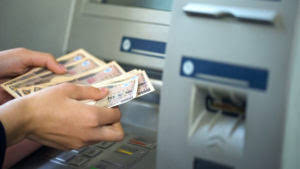
What every decision-making framework does is to facilitate the choice of an idea that has the least harmful consequences. The process helps analyze the situation and discard ideas with the worst effects. As the intuitive and recognition-primed models suggest, your decisions get more accurate with practice — so improve your decision-making skills by trying these https://www.bookstime.com/ approaches. The Vroom-Yetton model then guides you through a decision tree to one of five possible decision-making strategies based on your answers. For example, if it’s okay to satisfice and you don’t need buy-in from your team, you should make a top-down unilateral decision. The intuitive decision-making model is the opposite of the rational approach.
The Importance of Decision-Making Frameworks

When a table is created and all options are discussed, a team makes a decision and freezes it for 24 hours. It helps to release tension, check the data again, and weigh all the consequences of a selected solution. Developed by Dave Snowden, the Cynefin Framework categorizes decision-making contexts into simple, complicated, complex, and chaotic domains. Each of these domains requires different approaches and strategies, making it a versatile guide to navigate decision-making under varying levels of uncertainty and complexity.

OODA Loop (Observe, Orient, Decide, Act)
- Alternatively, in an idea-generation case, you would be asked to brainstorm ideas to turnaround the situation.
- By focusing on one “hat” or thinking mode at a time, decision-makers can consider multiple viewpoints, reducing the risk of bias and fostering comprehensive understanding.
- If you want to improve your decision-making approach, mastering the five decision-making models is a great place to start.
- These decisions are generally dealt with by sensing, categorizing, and responding.
- This would prevent you from liking one option too much and setting your criteria accordingly.
Surveys and customer insights offer a direct line to understanding the market’s response to a decision. Conducting a thorough outcome analysis helps establish the value a decision adds to an organization. Collaboration and the use of collective intelligence elevate the decision-making process by incorporating expert knowledge from various stakeholders. With big data, organizations can gather extensive information, providing a robust foundation for predictions and strategies. Decision trees are a visual representation of possible solutions where each branch represents a potential decision or event. A culture that values effective decisions stems from the top and trickles down.
Bounded rationality decision-making model

A perfect storm erupted when different business units’ decisions simultaneously increased the demand for cash while reducing its supply. In contrast, a specialty-chemicals company experienced the pain of excess choreography when it opened membership on each of its six governance committees to all senior leaders without clarifying the actual decision makers. All participants felt they had a right (and the need) to express an opinion on everything, even where they had little knowledge or expertise. The purpose of the meetings morphed into information sharing and unstructured debate, which stymied productive action (Exhibit 4). Decision-making frameworks and models provide systematic methods to evaluate options and prioritize actions. It assesses potential choices and their interdependencies to predict outcomes and formulate optimal decisions.

- Far more frequent than big-bet decisions are cross-cutting ones—think pricing, sales, and operations planning processes or new-product launches—that demand input from a wide range of constituents.
- Use the creative model when there’s space for unpredictability and experimentation.
- Unlike the rational framework, intuitive decision-making relies on gut instincts and past experiences.
- Choosing the right decision making model based on the specific situation helps stakeholders to be clear, objective, and aligned with organizational goals.
- A RACI chart is a powerful decision-making framework for the right team and project.
- Or, you’re deciding whether or not to kill off an outdated, yet loved feature.
A complicated context is when a problem has multiple simple solutions. Sometimes a quick decision might prove more useful than making the right decision. Sometimes the right decision might prove a better choice than a quick decision.
Scalable decision frameworks
The more you can work through hard decisions in a systematic and logical way, the easier they’ll become. They demand flexibility and a departure from traditional frameworks, as evidenced by methodologies such as Six Sigma. Leaders are expected decision making framework to harness innovative technologies while maintaining the human element central to organizational identity and ethics. Leadership roles are undergoing a transition, redefined by the emerging futurism in decision-making paradigms.
- Having to make a decision alone is work enough, you don’t need to add a mathematical equation to it to make things worse.
- A decision-making framework is a systematic approach that provides a structured way of analyzing and evaluating different options before making a decision.
- By defining each stakeholder’s contributions and expectations, conflicts arising from ambiguity or overlapping responsibilities can be minimized, promoting a more efficient and cohesive decision-making environment.
- It suggests that intuitive judgments can be valuable, particularly in situations where data is limited or complex.
- Here are the three decision categories that matter most to senior leaders, and the standout practice that makes the biggest difference for each type of decision.
- You’d use a different model when you have lots of data to inform your decision compared to a situation where you can’t access factual information.
- Decision making is choosing among alternative courses of action, including inaction.

